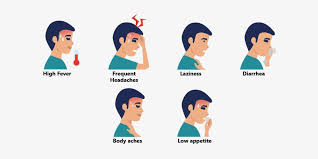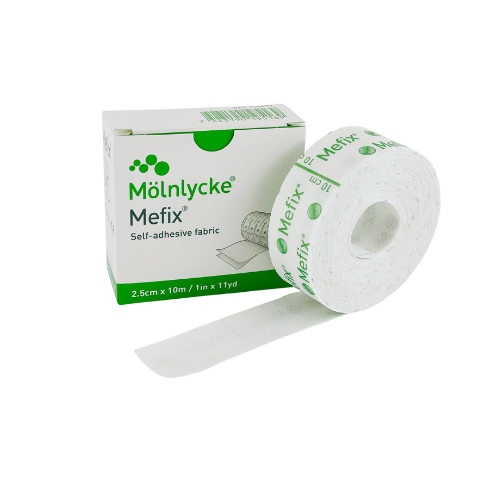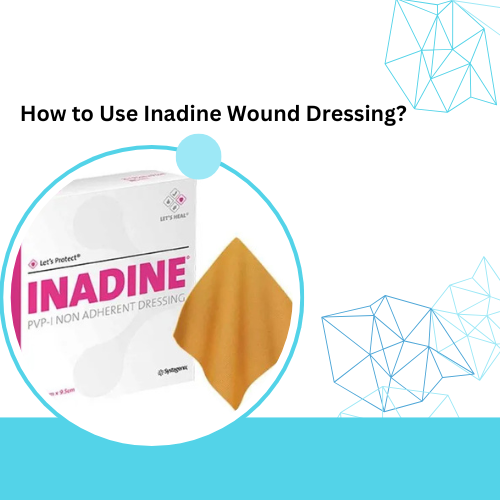Typhoid or enteric fever is a highly contagious infection that attacks the stomach and intestines. The primary culprit is Salmonella bacteria, commonly present in uncooked food and untreated water. High fever, headache, stomach pain, and constipation are the usual typhoid symptoms Doctors usually prescribe antibiotic therapy for typhoid fever to help patients recover. Some vaccines can reduce the risk of contracting typhoid fever. Seeking prompt treatment is crucial, as typhoid can lead to severe complications such as chronic inflammation and brain infections.
What is Typhoid Fever?
Salmonella typhi and Salmonella paratyphi strains cause typhoid fever, which according to the Typhoid Fact Sheet, affects nearly 9 million people worldwide annually. The bacteria typically incubate in the body for about 30 days before symptoms appear
Causes of Typhoid Fever
Salmonella is a species of anaerobic bacteria that can survive in acidic environments. Of these, Salmonella typhi and Salmonella paratyphi are the main bacteria that cause typhoid fever.
Typhoid transmission occurs in several ways. Here are some major causes of typhoid disease:
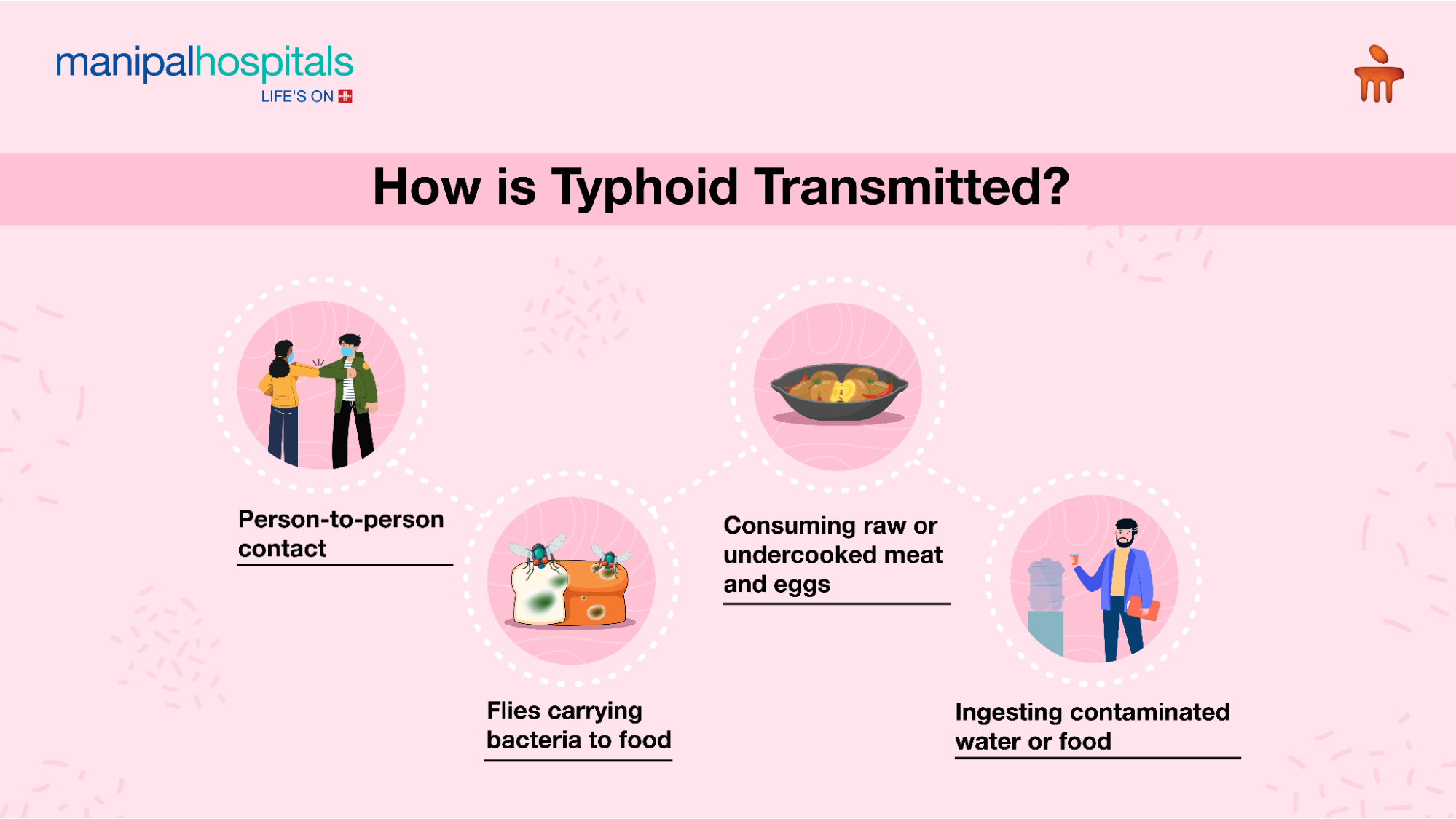
- Direct person-to-person contact
- Flies carrying bacteria from contaminated sources to food
- Consumption of raw or undercooked meat and eggs
- Ingestion of contaminated water or food
Typhoid primarily affects people living in or travelling to low- and middle-income countries with inadequate clean water, sanitation, and hygiene (WASH) infrastructure. Improving WASH conditions is crucial for reducing typhoid incidence and other diseases transmitted through the faecal-oral route.
Once ingested, Salmonella typhi and paratyphi bacteria survive in the stomach and enter the small intestine. After they penetrate the intestinal wall, the bacteria is engulfed by immune cells called macrophages. Instead of being destroyed, the bacteria survive and multiply within these cells.
The infected macrophages carry the bacteria to the liver, spleen, and bone marrow, where they further multiply. After about 1-2 weeks, the bacteria re-enter the bloodstream, causing the characteristic fever and other systemic symptoms of typhoid. As the infection progresses, the bacteria can colonise various organs, including the gallbladder, which may cause the person to carry the pathogen for a long period.
Recognising Typhoid Fever: Symptoms
The symptoms of typhoid disease typically develop gradually, often starting 1-3 weeks after exposure to Salmonella typhi bacteria. Common typhoid symptoms include:
- Fever which starts low and increases throughout the day
- Chills
- Persistent and severe headache
- Weakness and fatigue
- Muscle pain
- Stomach pain
- Either diarrhoea or constipation.
Small, flat, rose-coloured spots or rashes may appear on the chest and abdomen.
It’s important to note that some typhoid symptoms overlap with other diseases such as malaria and dysentery. Therefore, a proper medical diagnosis helps confirm whether these are enteric fever symptoms. Consult our infectious disease expert if you are experiencing the above symptoms of typhoid disease.
Stages of Typhoid Fever
The 4 stages of typhoid fever are:
- Stage 1: Typhoid symptoms begin 5-14 days after exposure to the bacteria. The fever gradually increases as days pass. During this stage, the bacteria move and multiply in the bloodstream.
- Stage 2: The bacteria multiply in the immune cells (Peyer’s patches). Patients experience abdominal symptoms such as stomach pain, diarrhoea, or constipation alongside the fever. Some patients develop rose spots—pink dots resembling a rash—on their chest and abdomen.
- Stage 3: Within three weeks of bacterial entry, the pathogen population increases significantly and it is capable of causing significant damage if left untreated. This rapid proliferation can lead to serious complications, including internal bleeding and encephalitis.
- Stage 4: Patients begin to recover, and their fever subsides. However, the bacteria may persist in the gallbladder without causing symptoms. These individuals remain contagious, potentially spreading the disease to others.
Diagnosing Typhoid Fever
Diagnosis of enteric fever is a straightforward process. They first analyse the patient’s symptoms, travel history, and recent food and fluid consumption. After conducting a physical examination and reviewing the medical history, the doctor may request one or more of the following samples to test for the presence of typhoid bacteria:
- Blood
- Urine
- Stool
- Bone marrow
Laboratories use these samples for bacterial culture, examining them under a microscope to identify the typhoid bacteria.
Additionally, the doctor may recommend:
- An antibody test (Widal agglutination) to detect antibodies against typhoid
- A blood test to check for typhoid DNA
These diagnostic methods help confirm the presence of typhoid and guide appropriate treatment.
Treatment for Typhoid Fever
Antibiotic treatment is the most effective strategy for typhoid fever management. Doctors prescribe specific antibiotics based on the infecting strain. Common antibiotics include:
- Fluoroquinolones: These inhibit bacterial multiplication.
- Cephalosporins: These prevent bacteria from building cell walls.
- Macrolides: These block bacterial protein synthesis.
- Carbapenems: These also prevent bacterial cell wall formation.
The primary goal of antibiotic therapy is to disrupt processes essential for bacterial survival and reproduction.
Additional treatment measures include:
- Hydration: Patients should drink plenty of water and oral rehydration solutions (ORS). Severe dehydration requires intravenous fluid administration.
- Surgery: Doctors recommend surgical intervention if the intestines are damaged.
- Diet: Patients should consume low-fibre, nutrient-dense foods that are easy to digest.
Consult our infectious disease hospital if you or your loved one needs typhoid fever treatment.
Managing Recovery
As patients recover from typhoid fever, they experience a gradual easing of symptoms. Key indicators of recovery include:
- Improved appetite
- Relief from headache, abdominal pain, and body aches
- Reduced fever
- Increased energy levels
- Reduced diarrhoea
- Cleared chest congestion
- Overall reduction in discomfort
Early treatment with antibiotics can jumpstart recovery within days. Most patients begin to feel significantly better within two weeks. However, you should get medical follow-ups and testing until doctors confirm you’re no longer contagious.
Prevention and Transmission
Dr. Amitabha Ghosh, a consultant for internal medicine at Manipal Hospitals, Gurgaon, emphasises the importance of maintaining good hygiene practices such as using clean utensils, washing hands regularly, and avoiding raw foods.
To prevent typhoid transmission and maintain hygiene, follow these guidelines:
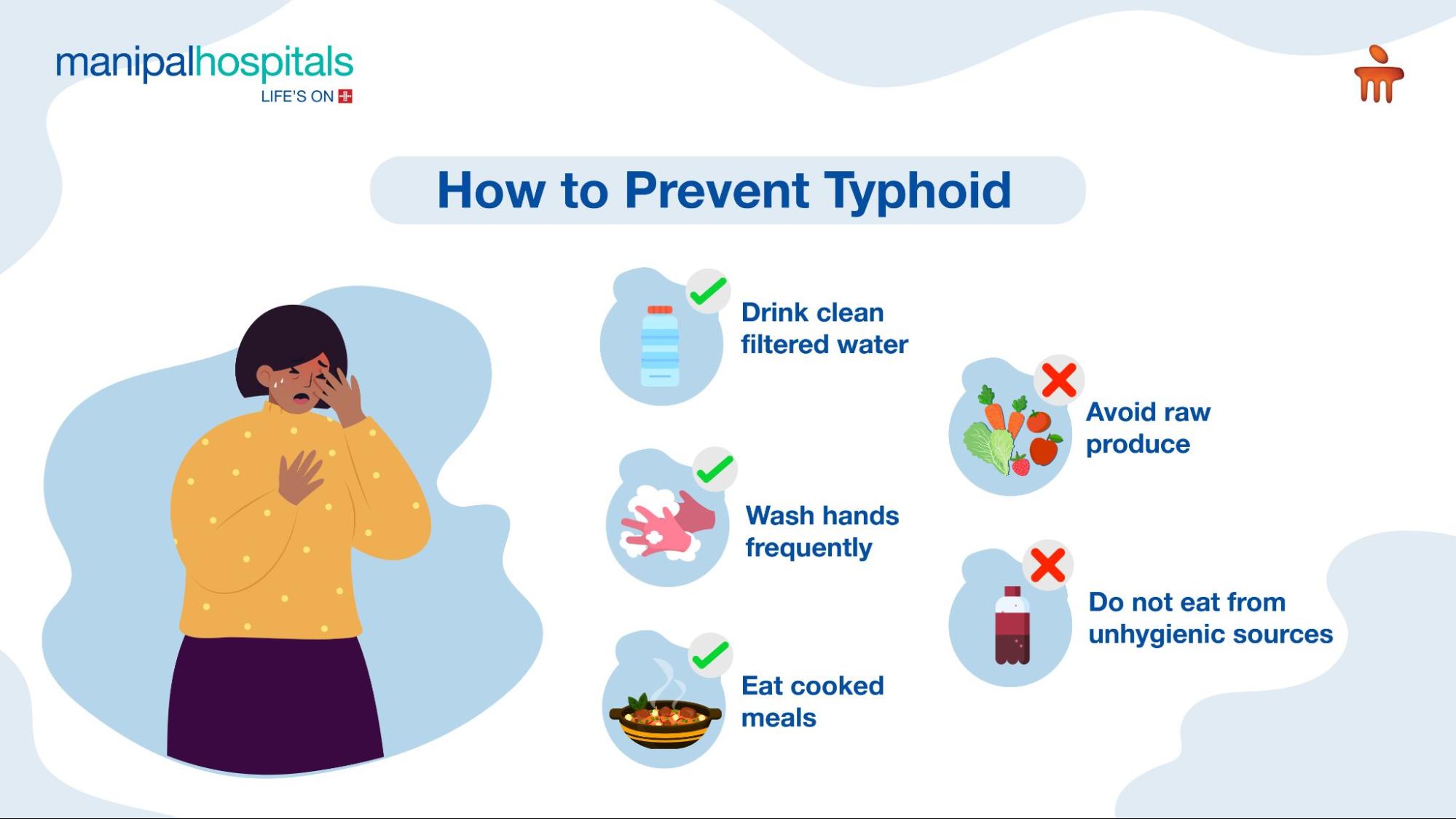
- Avoid drinking water from taps or wells
- Steer clear of any water source that appears unsanitary.
- Refrain from eating raw produce, fish, or meat.
- Consume only cooked meals.
- Avoid food sold by street vendors.
- Eat pasteurised dairy products and fully cooked eggs.
- Wash your hands frequently after using the bathroom and before handling food.
- Minimise contact with sick individuals.
- If you are ill, isolate yourself and wash your hands often.
- If your doctor suspects you are a carrier, they may recommend the typhoid vaccine.
Conclusion
Typhoid fever is a serious bacterial infection that can result in severe consequences if left untreated. The bacteria that cause typhoid are Salmonella typhi and Salmonella paratyphi. They are normally spread through direct contact and ingesting contaminated food or water. Common symptoms include high fever, headache, stomach pain, and diarrhoea. Treatment usually includes antibiotic therapy after which people recover and feel better within two weeks.
However, typhoid is a highly preventable disease. Practising good hygiene, consuming safe food and water, and getting vaccinated when travelling to high-risk areas are some ways to protect yourself from typhoid fever. If you suspect you have typhoid, please seek medical attention immediately so that you can avoid complications.
